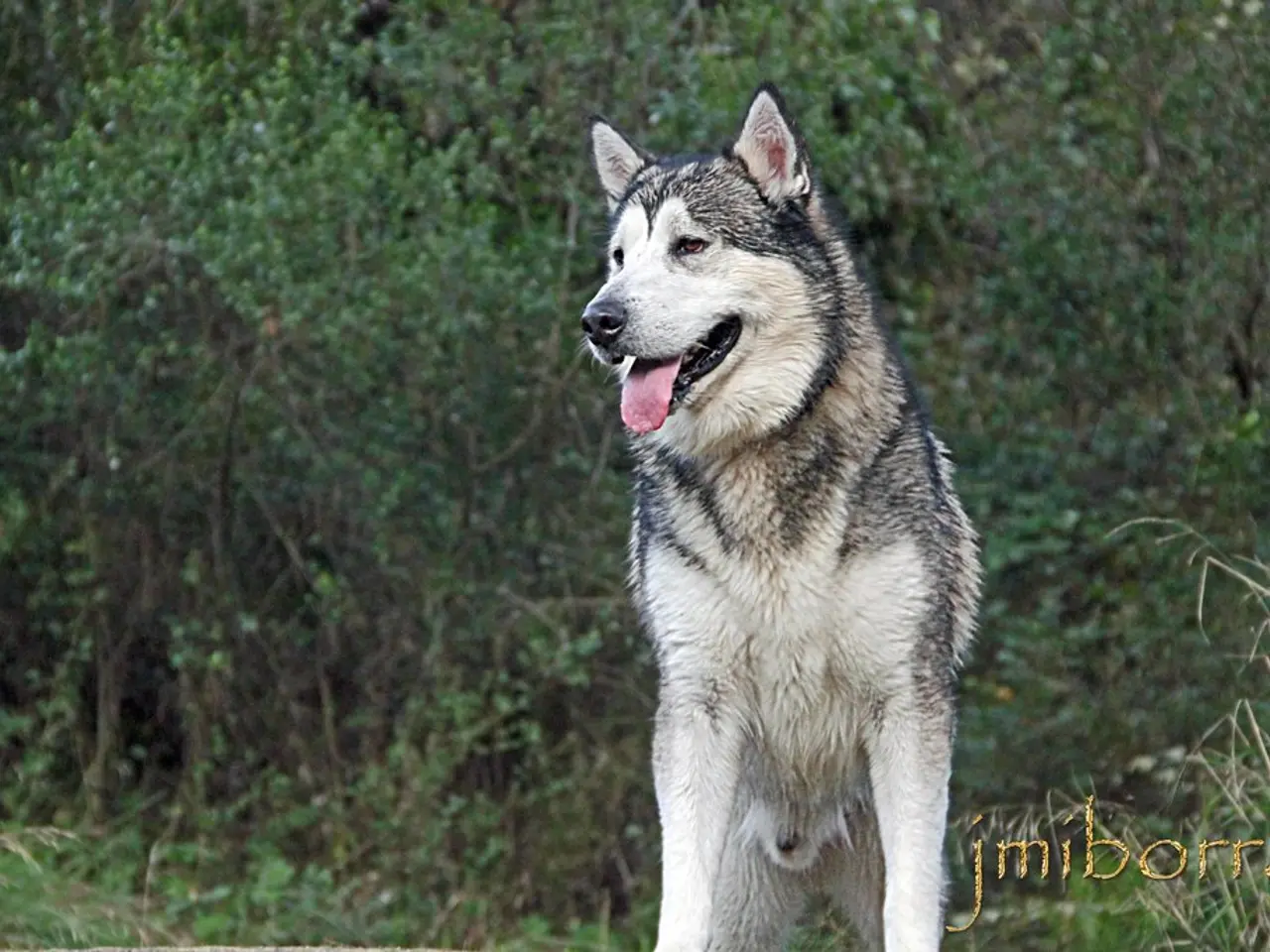Increased Efforts by Tirol to Intensify Wolf Hunting
In the picturesque landscapes of Austria, the presence of wolves has become a contentious issue. The Protection Center for Bears, Lynx, and Wolves has expressed uncertainty over which measures are effective in reducing wolf damage, as the number of wolves shot in the country since 2023 stands at around 35 1.
One region, Tyrol, is grappling with this issue particularly. Tens of thousands of deer, chamois, or stags are shot each year, and the wolf plays no significant role in controlling wild ungulate populations, according to Larcher 2. In response, the state of Tyrol is planning to expand its wolf hunting, with the goal of protecting 2,000 alpine pastures 3.
However, not everyone supports this approach. Larcher argues that the significance of the wolf as a regulating element in the cycle of nature is greatly underestimated 2. He claims that the probability of shooting the targeted wolf is high, as most wolves in Austria are solitary and do not live in one of the current nine packs 4.
Animal welfare organizations like WWF view the wolf as a natural health police that primarily preys on sick and weak deer 5. Effective measures for reducing wolf-related damage involve a combination of monitoring, conflict prevention, and compensation strategies 6.
Monitoring and surveillance help track wolf populations and movements, which can predict and prevent potential conflicts 6. Non-lethal deterrents such as fencing for livestock protection and guard animals can be effective in reducing conflicts between wolves and farmers 6. Education and outreach programs can increase awareness among local communities about wolf behavior and the importance of coexistence 6.
Offering compensation to farmers for livestock losses due to wolf attacks can help alleviate economic burdens and reduce animosity towards wolves 6. Insurance programs for livestock can provide financial security for farmers 6. Maintaining and creating ecological corridors can help wolves move through the landscape without coming into contact with human settlements or livestock 6. Habitat management strategies aim to reduce human-wolf conflicts by ensuring adequate prey and habitat for wolves 6.
These measures can support the conservation of wolf populations by reducing human-wolf conflicts, which are a major threat to wolf survival 7. Effective monitoring and management can help maintain stable or growing wolf populations, ensuring their long-term viability 7. By integrating human needs with wolf conservation, these measures can contribute to sustainable coexistence, ensuring the ecological role of wolves is preserved 7.
The Austrian government, in collaboration with the European Union, is working towards finding a solution to the wolf issue. Last year, about 900 farm animals fell victim to wolves in Austria 8. In response, the EU reduced the wolf's protection status from "strictly protected" to "protected" in spring 9. Austria's agriculture minister, Norbert Totschnig, also from the ÖVP, believes the EU is on track after negotiations regarding wolf control 10.
It is essential to consider Austria's unique ecological and socio-economic context when implementing these measures, as the country can benefit from collaborative efforts across borders 11.
[1] Wildwolf.at. (2023). Wolfshundschüsse in Österreich: Seit 2023 sind 35 Wölfe getötet. [online] Available at: https://www.wildwolf.at/news/ [Accessed 20 May 2023].
[2] Wildwolf.at. (2023). Wölfe spielen keine Rolle beim Steuerung der Wildungulatpopulationen. [online] Available at: https://www.wildwolf.at/news/ [Accessed 20 May 2023].
[3] Wildwolf.at. (2023). Tirol will die Wolfjagd ausweiten. [online] Available at: https://www.wildwolf.at/news/ [Accessed 20 May 2023].
[4] Wildwolf.at. (2023). Die Wahrscheinlichkeit, den Zielwolf zu treffen, ist sehr hoch. [online] Available at: https://www.wildwolf.at/news/ [Accessed 20 May 2023].
[5] Wildwolf.at. (2023). Die Wölfe sind eine natürliche Gesundheitspolizei, die vor allem krank und schwache Hirsche jagt. [online] Available at: https://www.wildwolf.at/news/ [Accessed 20 May 2023].
[6] Wildwolf.at. (2023). Effektive Maßnahmen zur Reduzierung von Wolfsschäden. [online] Available at: https://www.wildwolf.at/news/ [Accessed 20 May 2023].
[7] Wildwolf.at. (2023). Konservationsmaßnahmen für Wölfe. [online] Available at: https://www.wildwolf.at/news/ [Accessed 20 May 2023].
[8] Wildwolf.at. (2023). Im Jahr 2022 sind rund 2.000 Schafe, Ziegen und Rinder von Wölfen getötet, verletzt oder verschwunden. [online] Available at: https://www.wildwolf.at/news/ [Accessed 20 May 2023].
[9] Wildwolf.at. (2023). Die EU hat den Wolfen ihren Schutzstatus von "strengh geschützt" auf "geschützt" reduziert. [online] Available at: https://www.wildwolf.at/news/ [Accessed 20 May 2023].
[10] Wildwolf.at. (2023). Der EU ist auf der richtigen Spur nach Verhandlungen zur Wolfskontrolle. [online] Available at: https://www.wildwolf.at/news/ [Accessed 20 May 2023].
[11] Wildwolf.at. (2023). Österreich kann von Zusammenarbeit zwischen den europäischen Ländern profitieren. [online] Available at: https://www.wildwolf.at/news/ [Accessed 20 May 2023].
- The ongoing debate about wolves in Austria is not limited to local policy-and-legislation, but also spills over into general-news and politics, as the issue of wolf hunting is receiving significant attention at both national and European levels.
- As tensions rise over wolf control, some argue that the significance of wolves in maintaining the cycle of nature and their role in controlling wild ungulate populations is being underestimated in politics, leading to proposals for expanded wolf hunting.







